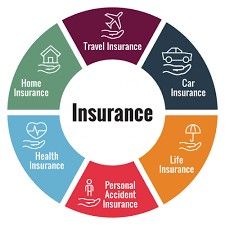You pay insurance premiums every month. You assume you’re protected. Then disaster — a major medical bill, a house fire, an accident — shows your coverage doesn’t stretch far enough. Underinsurance is quietly common: policies that look adequate but leave you exposed to huge costs. Here are three clear signs you’re underinsured — and fast, practical steps to fix them.

Sign 1 — Your policy limits are lower than the cost to replace or rebuild
Why it matters: Many policies still use old replacement values or depreciated “actual cash value” settings. If rebuilding or replacing costs more than your limit, you’ll pay the difference out of pocket.
How to check:
- Open your declarations page (the “dec page”) and note the policy limit for the asset (home, vehicle, equipment).
- Compare that to current replacement cost estimates (contractor quote, local car repair estimate).
- Ask whether the policy uses replacement cost or actual cash value — the latter factors in depreciation and often pays much less.

Action steps:
- Get a replacement-cost estimate for major assets (home rebuild estimate, vehicle replacement cost).
- If limits lag reality, ask for an inflation guard or update the coverage to replacement-cost basis.
- Consider scheduled/insured-value endorsements for high-value items (jewelry, electronics).
Sign 2 — Major life or business changes since your last policy review
Why it matters: Buying a house, getting married, welcoming a child, starting a side business, or adding valuable equipment — each of these changes your risk profile. If you didn’t notify your insurer, coverage gaps appear.
Common missed updates:
- New dependents (need more life and health coverage)
- Home renovations (increased rebuild cost)
- Business activities from home (homeowners policies often exclude business liabilities)
- New driver in the household (affects auto premiums & coverage)
Action steps: If you’re underinsured
- Schedule an annual “insurance audit” — note changes in family, property, income, or business.
- Update beneficiaries and coverage limits immediately after major life events.
- If you run a business or gig from home, add a business policy or umbrella liability extension.
Sign 3 — You face frequent denials, large out-of-pocket expenses, or high deductibles
Why it matters: Sometimes a policy technically “covers” an event but with exclusions, high deductibles, or network limitations that leave you cash-strapped.
Red flags:
- Medical bills denied because of out-of-network providers or specific exclusions.
- Repeated claims denied based on fine-print exclusions (flood, earthquake, wear-and-tear).
- Deductibles so high they defeat the purpose of coverage.
Action steps: If you are underinsured.
- Review exclusions and in-network provider lists for health and property policies.
- Evaluate if a lower-deductible policy or supplemental policy makes sense (flood, earthquake, critical illness).
- Consider an umbrella liability policy if your net worth or future earnings are at risk.
Quick: A practical underinsurance checklist
- Locate your policy declarations pages and note limits & deductibles.
- Confirm whether coverage is replacement cost or actual cash value.
- Revalue your home, car, and high-value personal items this year.
- List life / business changes since last policy update.
- Compare out-of-pocket exposure vs. emergency savings.
- Talk to a licensed agent about riders (inflation guard, scheduled property) and umbrella liability.
What to do next – If you’re underinsured
Free 15-minute policy audit — Get a quick expert scan of your declarations page and 3 immediate recommendations.
Request for a Policy Audit at Terces Finance
FAQs – Are you Underinsured?
Q: How often should I review my insurance?
A: At least once a year and after any major life or home change.
Life Insurance Secrets: Why You Still Need It Without Kids
Q: Does homeowner’s insurance cover flood damage?
A: Usually not — flood often requires a separate policy.
Q: Do I need an umbrella policy?
A: If your assets, savings, or future earnings are exposed to lawsuits, an umbrella policy is cost-effective protection.





